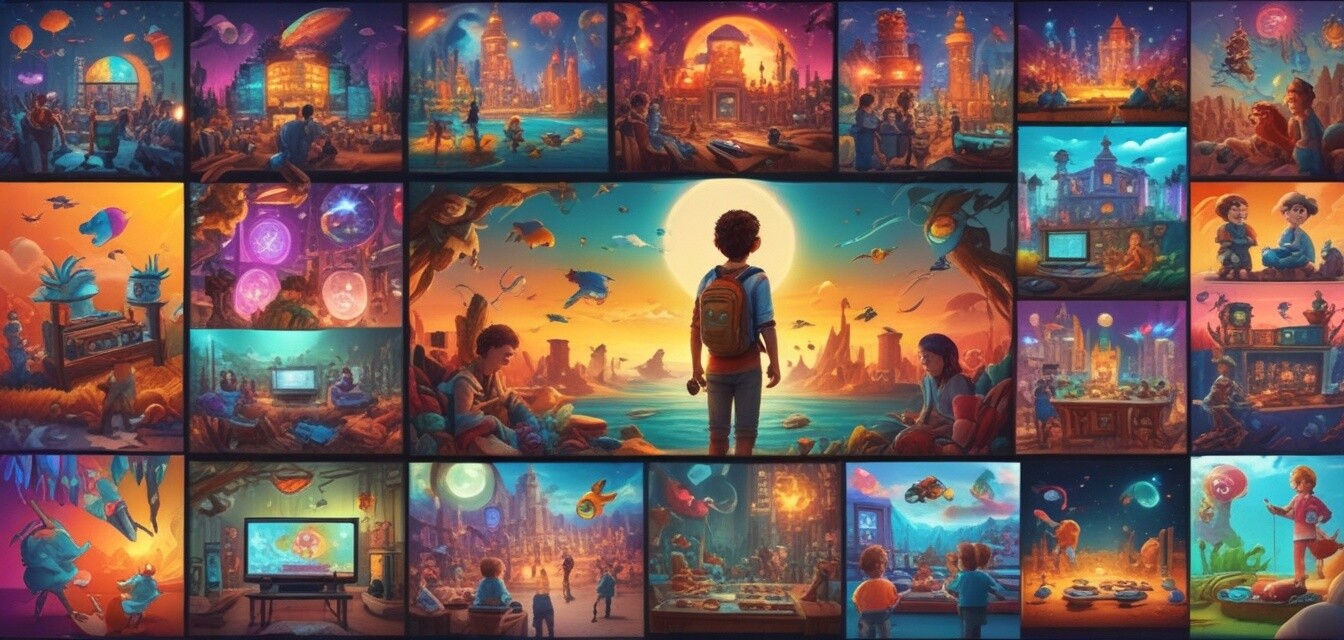
How Interactive Learning is Changing Children’s Play
Key Takeaways
- The rise of interactive learning games enhances engagement.
- Educational content is now accessible through various platforms.
- Social engagement in gaming fosters teamwork and communication skills.
- Technological advancements are driving creativity in children's play.
- Parental involvement has shifted toward guidance rather than instruction.
The landscape of children's play is evolving, influenced significantly by the advancements in interactive learning games. These engaging platforms are reshaping how kids interact with educational content, making learning not just informative but fun. In 2025, the fusion of technology and education presents a unique opportunity to foster creativity and critical thinking among young learners.
The rise of interactive learning games
In recent years, we have seen a surge in the development of educational electronics, specifically interactive games designed for learning. These platforms have revolutionized how children access information, making it engaging and enjoyable. Here are some key characteristics of these games:
| Characteristic | Description |
|---|---|
| Engagement | Utilizes gamification to hook children's interest. |
| Accessibility | Available across various devices, including tablets, consoles, and smartphones. |
| Interactivity | Allows children to actively participate in their learning experience. |
| Feedback | Provides instant feedback, allowing children to learn from their mistakes. |
Impact on learning and engagement
As interactive learning games become a staple in children’s play routines, their influence on education is profound. Let's explore how these games are enhancing the learning journey:
- Enhanced Retention: Research indicates that hands-on interactive experiences lead to improved retention rates among children. The combined use of auditory and visual stimulation aids memory.
- Cognitive Development: Interactive problem-solving enhances critical thinking skills and cognitive development. By facing challenges within games, children learn to approach situations logically.
- Creative Expression: Many of these games encourage children to express their creativity through customizable characters and environments.
- Sociability: Multiplayer interactive games promote social interactions, encouraging teamwork and communication among peers.
Technological advancements shaping play
The technology behind interactive learning games is constantly evolving. Let's take a look at some recent advancements that are enhancing these experiences:
| Technology | Feature | Benefit |
|---|---|---|
| Augmented Reality (AR) | Brings static content to life | Enhances engagement through immersive experiences |
| Artificial Intelligence (AI) | Personalizes learning paths | Ensures content is tailored to individual skill levels |
| Cloud Gaming | Access games from any device | Increases accessibility for all demographics |
| Interactive 3D Environments | Creates realistic worlds | Encourages exploration and discovery |
Parental involvement in modern play
As children become more engaged with technology, the role of parents has shifted significantly. Rather than simply overseeing their play, parents now find themselves as partners in this new learning journey.
- Guidance: Parents can guide their children’s choices in selecting suitable games that align with educational goals.
- Co-Play: Joint participation in games strengthens parent-child bonding while providing opportunities for discussion around new concepts.
- Monitoring: Through various tools, parents can track progress and ensure children are receiving a balanced gaming experience.
Challenges and considerations
Despite the numerous advantages of interactive learning games, there are also challenges and considerations to be mindful of:
Pros
- Increased engagement and motivation
- Allows for self-paced learning
- Integrates social skills development
Cons
- Potential for screen time overload
- Need for parental guidance to ensure educational value
- Variety in game quality and effectiveness
The future of interactive learning
As we look ahead to the next few years, it's clear that interactive learning games will continue to evolve, incorporating new technologies and adapting to educational needs. These trends are paving the way for innovative approaches to education, making playing more than just fun—it's becoming a crucial part of the learning process.
Stay Updated with the Latest News
It's important to stay informed about the current trends and advancements in this exciting area. For more insights into gaming and educational technologies, check out our News and Trends section.
Interactive learning is not just a trend; it's the future of how we understand education and play. By embracing these changes, parents and educators can collaboratively foster environments that nurture creativity, critical thinking, and lifelong learning.